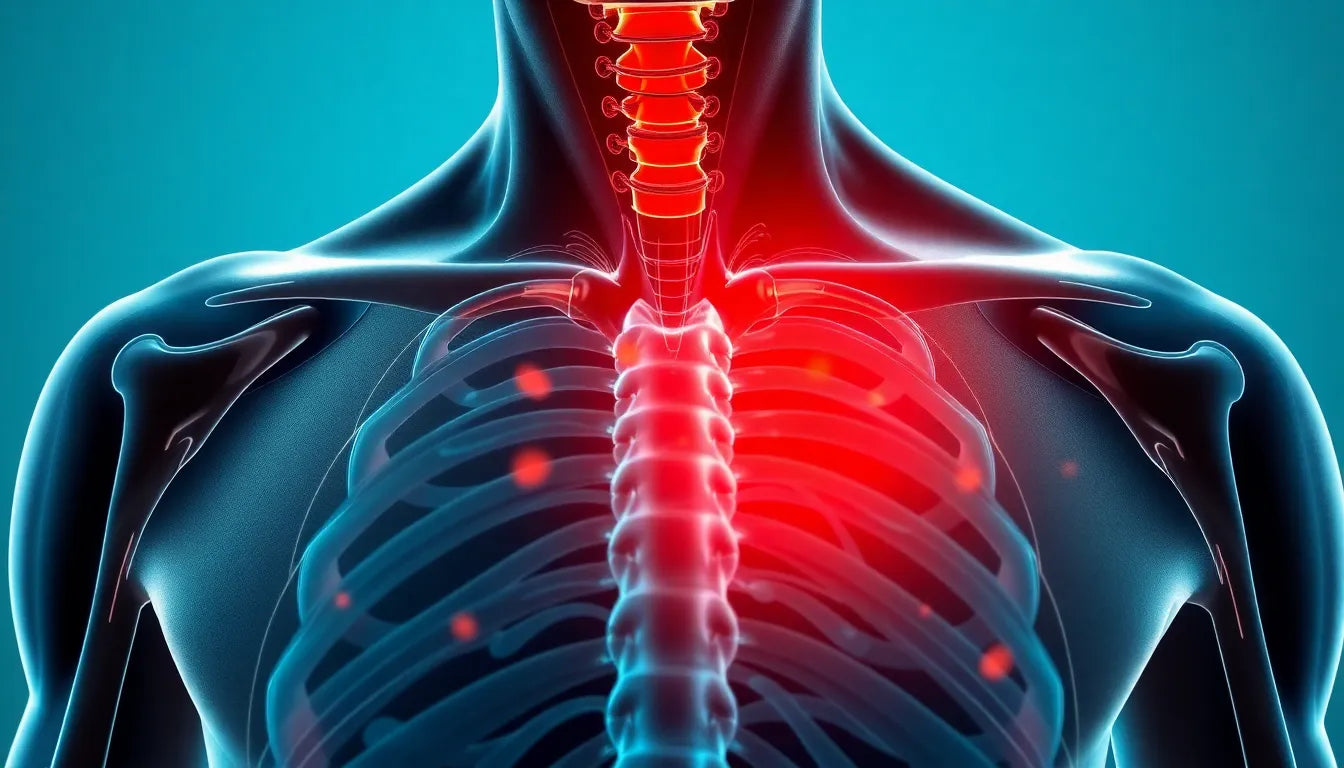Experiencing severe back pain that hinders your ability to walk can be an alarming and distressing situation. While back pain is a common ailment affecting many people, when it escalates to the point where walking becomes difficult or impossible, it signals a more serious issue that demands immediate attention. This level of discomfort is not just a minor inconvenience; it can significantly impact your quality of life and mobility.
Understanding the severity of back pain affecting mobility
When back pain reaches a level where it compromises your ability to walk, it often indicates acute or serious underlying medical conditions. Common culprits include a herniated disc, spinal stenosis, or nerve compression. These conditions can lead to intense pain and, in some cases, even paralysis if not addressed promptly. Understanding these potential causes is crucial for determining the appropriate course of action and ensuring that you receive the necessary medical evaluation and treatment.
It's important to recognize that not all back pain is created equal. While some cases may resolve with rest and basic care, severe pain that affects your ability to walk is a red flag that should not be ignored. Knowing when to seek medical help can make a significant difference in your recovery and overall health.
The purpose of this post
This blog post aims to educate and inform readers about the potential causes of severe back pain that limits mobility, immediate actions you can take, and long-term management strategies. By understanding the seriousness of the symptoms and the underlying conditions that may be at play, you can make informed decisions about seeking medical help and exploring treatment options.
In the following sections, we will delve deeper into the warning signs that indicate a medical emergency, explore common conditions that lead to severe back pain, and provide guidance on professional evaluation and treatment. Our goal is to equip you with the knowledge you need to navigate this challenging situation and regain your mobility.
Acute advice and warning signs of severe back pain
When you experience severe back pain that affects your ability to walk, it is crucial to understand the seriousness of the situation. This condition may indicate a medical emergency, especially if accompanied by certain alarming symptoms. Loss of strength, sensory disturbances, or uncontrolled bowel or bladder function are significant red flags. These symptoms suggest potential nerve damage or other serious issues that require immediate medical evaluation. Ignoring these signs can lead to worsening conditions and potentially permanent damage.
Common causes of back pain affecting mobility
Several conditions can lead to severe back pain that impedes walking. Understanding these causes can help in identifying the right treatment approach:
| Condition | Symptoms | Causes | Treatments |
|---|---|---|---|
| Herniated disc | Intense pain, numbness, weakness | Disc material pressing on nerves | Physical therapy, medication, surgery |
| Spinal stenosis | Back pain, leg weakness, difficulty walking | Narrowing of spinal canal | Exercise, pain relief, surgical intervention |
| Nerve compression | Pain, tingling, muscle weakness | Pressure on spinal nerves | Rest, physiotherapy, medication |
The importance of professional medical guidance
Seeking professional medical guidance is essential when dealing with severe back pain that affects mobility. A healthcare provider can perform a detailed evaluation to determine the underlying cause of your symptoms. Diagnostic procedures such as MRI or CT scans are often recommended to provide a clear view of the spine and identify any abnormalities. These diagnostic tools are crucial in developing an effective treatment plan tailored to your specific condition.
Ignoring severe back pain can lead to complications and prolonged recovery. Therefore, timely medical intervention is vital for ensuring the best possible outcome and preventing further deterioration of your condition.
Conclusion
Severe back pain that hinders your ability to walk is a serious condition that requires immediate attention. By understanding the warning signs and common causes, you can better assess your situation and seek the appropriate medical help. Remember that professional evaluation and treatment are key to managing your symptoms and regaining mobility. In the next section, we will explore self-care tips and long-term management strategies to aid in recovery and prevent future episodes.
Self-care and recovery tips for severe back pain
When faced with severe back pain that affects your mobility, taking immediate self-care measures can help alleviate discomfort and support recovery. Initially, it is crucial to rest and avoid any strenuous activities that could exacerbate the pain. Applying cold or heat therapy can also be beneficial; cold packs may reduce inflammation, while heat packs can soothe muscle tension.

Lumbar support belt
Supports and stabilises the lower back, ideal for pain relief and daily activities.
Incorporating gentle stretching exercises into your routine can aid in maintaining flexibility and promoting blood flow to the affected area. However, it is essential to perform these exercises carefully to prevent further injury. Consulting a physiotherapist for personalized guidance can be highly effective in ensuring that you engage in appropriate activities that support your recovery.
The role of physiotherapy in recovery
Physiotherapy plays a vital role in the rehabilitation process for individuals experiencing severe back pain. A physiotherapist can design a tailored exercise program that focuses on strengthening the muscles supporting the spine, improving flexibility, and enhancing overall mobility. In addition to exercises, they may employ techniques such as manual therapy, massage, and electrical stimulation to relieve pain and facilitate healing.
Adhering to a physiotherapy regimen can significantly improve recovery outcomes, helping you regain mobility and reduce the likelihood of future episodes of debilitating back pain.

Women's Posture Shirt™ - Black
Posture shirt with Neuroband™ technology for pain relief and posture improvement.
When to expect improvement
Recovery timelines for severe back pain vary depending on the underlying cause and individual factors such as age, overall health, and adherence to treatment plans. While some individuals may notice improvement within a few weeks, others might require several months to fully recover. Consistently following prescribed treatment, including physiotherapy and self-care measures, is crucial in accelerating recovery and ensuring long-term health benefits.
It's important to maintain open communication with your healthcare provider and physiotherapist to monitor progress and make necessary adjustments to your treatment plan.
Prevention and long-term management
Preventing future episodes of severe back pain involves making lifestyle adjustments and incorporating healthy habits into your daily routine. Ergonomic adjustments at work and home, such as using supportive chairs and maintaining proper posture, can significantly reduce strain on your back. Regular exercise, including core strengthening and flexibility exercises, helps maintain spinal health and prevent injury.
Maintaining a healthy weight is also crucial, as excess weight can place additional stress on the spine. Additionally, avoiding smoking and managing stress levels are important factors in preventing back pain. By adopting these preventive measures, you can reduce the risk of experiencing severe back pain in the future.
Frequently Asked Questions
What should I do if I suddenly can't walk due to back pain?
If you experience sudden inability to walk due to back pain, it is imperative to seek immediate medical attention. This symptom, especially if accompanied by other alarming signs like loss of strength or sensory disturbances, could indicate a serious condition that requires urgent evaluation.
Can back pain that stops me from walking resolve on its own?
While some cases of back pain may improve with rest and self-care, it is essential to seek professional evaluation for severe symptoms. A healthcare provider can determine the underlying cause and recommend appropriate treatment to prevent further complications.
How can I prevent severe back pain in the future?
Preventing severe back pain involves adopting ergonomic practices, engaging in regular physical activity, and addressing any underlying health issues. Maintaining a healthy weight, avoiding smoking, and managing stress are also crucial in reducing the risk of back pain.
What role do ergonomic products play in managing back pain?
Ergonomic products, such as supportive chairs and adjustable desks, help maintain proper posture and reduce strain on the spine. By promoting a comfortable and healthy work environment, these products can prevent pain exacerbations and support long-term back health.
Kilder
- Aarhus Osteopati. (n.d.). "Hold i ryggen."
- Kroppens Hus. (n.d.). "Lindre smerter i mellemryggen - det skal du vide."
- Gigtforeningen. (n.d.). "Hvor har du ondt? Ryg."
- Helsenorge. (n.d.). "Ryggsmerter."
- Sundhed RM. (n.d.). "Landesmerter: Hvornår bør du kontakte lægen?"
- Sundhed med Mening. (n.d.). "Hold i ryggen."
- Sundhed RM. (n.d.). "Ondt i ryggen: Se hvad du selv kan gøre."


















